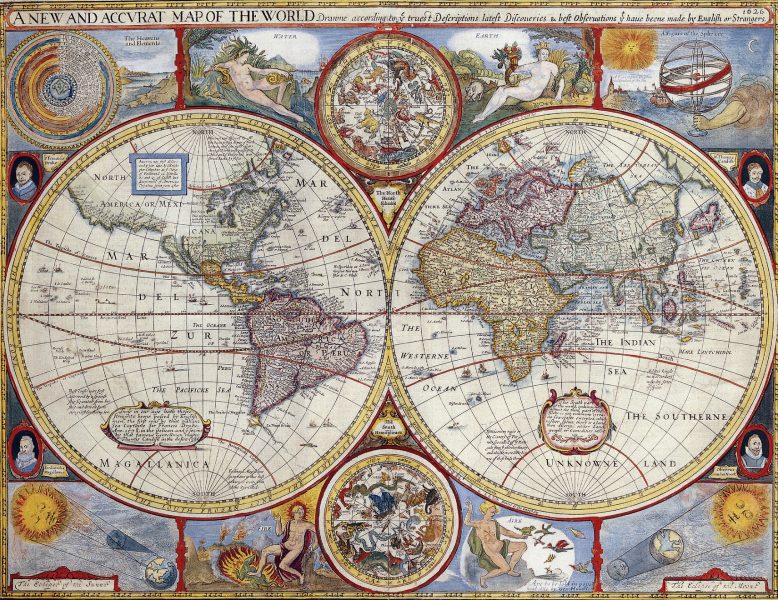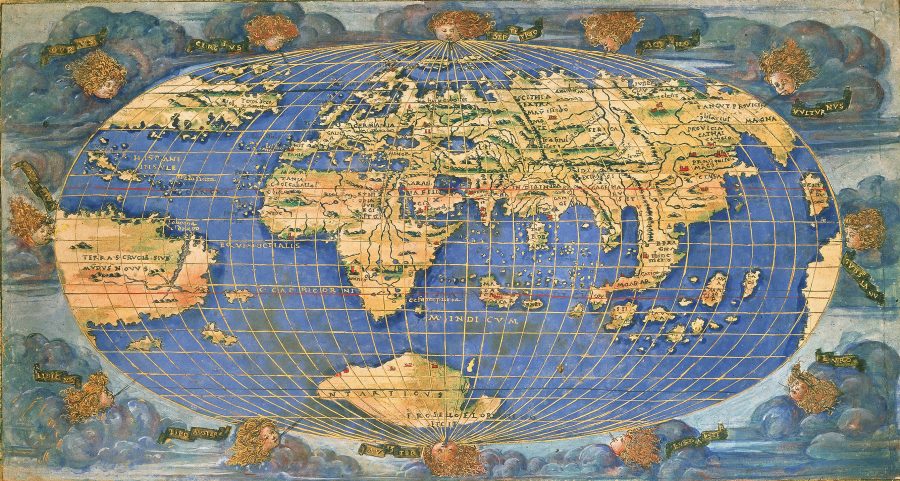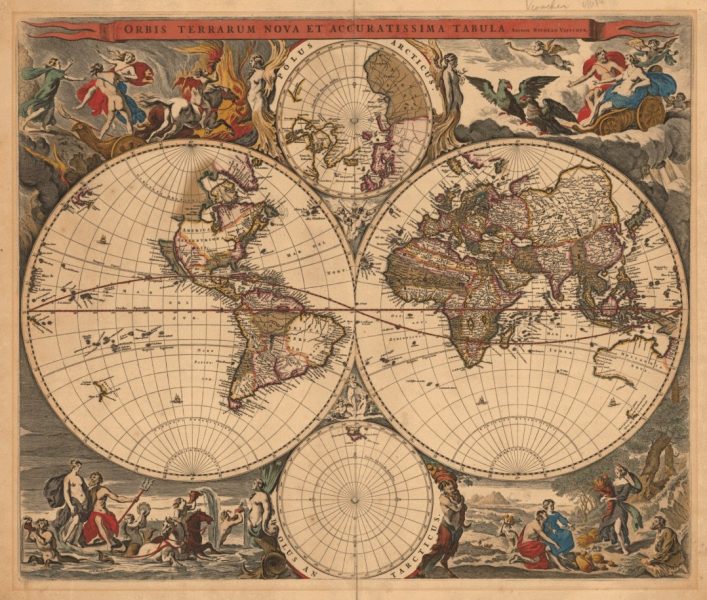When it comes to how maps have evolved through history, you should know five maps played a significant role. These accurately documented the evolution of our world, and if you take a closer look at all five of them, you can quickly identify key elements of the modern map. Hence, let’s see up next, which are those five maps that contributed to the mapped world we know today.
#1 Ptolemy’s 13th-century map
Ptolemy is considered to be the father of geography. He was a scholar with an interesting view over the world, which ultimately gave him the title of father of geography. He created several small maps to create the world’s first global map. An interesting about this 13th-century map is that Europe is positioned in the center. Of course, he didn’t add the Pacific or the American land, as it was yet to be discovered at that time.
#2 Muhammad al-Idrisi 1154’s circular map
Experts say that al-Idrisi’s vision of the world is a rather interesting one. It was a fact that the world might be round, which is why this circular map attempted to describe it as that. As for today, this is viewed as one of the most advanced ancient maps, as both Islamic and Western cultures influence it.
#3 Martin Waldseemuller 1507’s map
This is a key map concerning how maps have evolved throughout history. It is the first one to acknowledge and document America. Waldseemuller used the information of the cartographer Amerigo Vespucci, so that he created an accurate map of all the lands comprising our world. Yet, this map came out in only one exemplary, and it got lost, being rediscovered back in 1901.
#4 Halford Mackinder 1904’s map
Halford Mackinder is considered to be an important contributor to how maps are designed today, along with hoe geography, is perceived. He was the one that paved the path to the birth of geopolitics. He created an interesting geopolitics map of the 1900s, offering an accurate depiction of how continents are positioned and how they can gain power on the globe.
#5 Google Earth
And since Google shared with the world the 2011s novelty consisting of Google earth, we can say with certainty that this is the peak of map evolution through history. Up until that point, we had limited information about the world surrounding us, while the maps weren’t interactive. But Google Earth came to offer us a novel and enticing geographic component. We are able to see real time representations of specific locations, along with several other useful information.
The bottom line is that maps evolved through history and were inspired by important personalities. No matter if we talk about Greek’s first world map or Google’s constant attempts to get us closer to distinct corners of the world, cartography is an interesting field one could study. As for today, the world continually changes, which is why we need to keep a close eye on those small, but important shifts.


